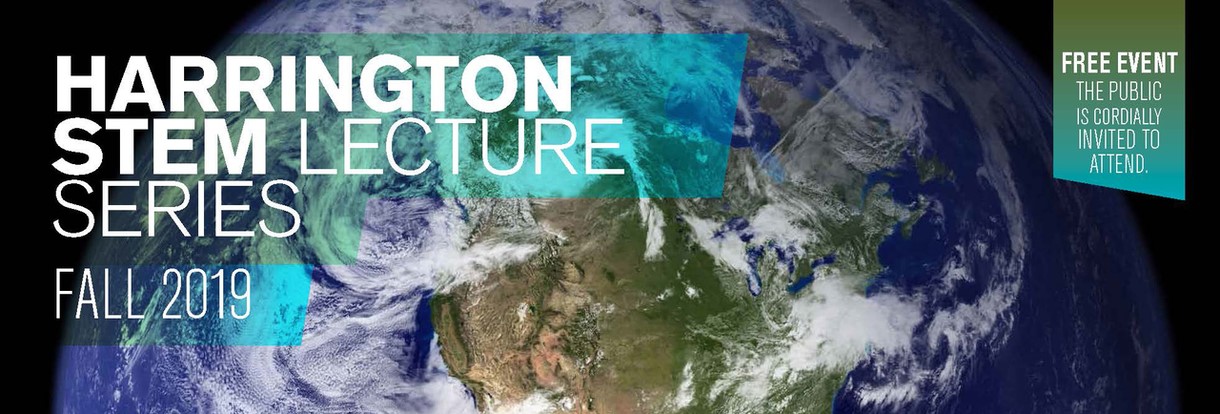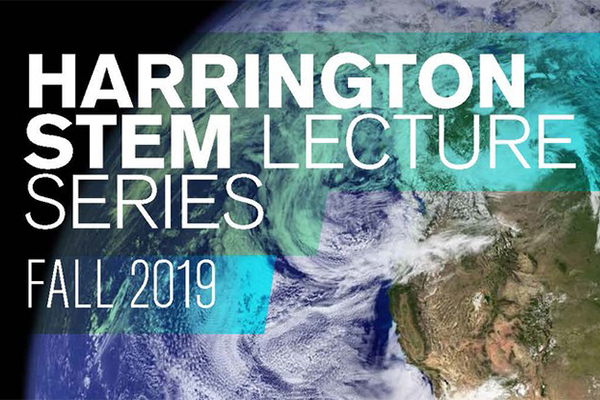Fall 2019 Harrington STEM Series searches for the origins of life and the causes of earthquakes
 SUNY New Paltz’s Harrington STEM Lecture Series resumes this fall with three fascinating discussions delivered by three of the nation’s most respected scientists and researchers.
SUNY New Paltz’s Harrington STEM Lecture Series resumes this fall with three fascinating discussions delivered by three of the nation’s most respected scientists and researchers.
The fall 2019 slate includes talks on complex molecules that may hold secrets about the origins of life; a discussion of innovative technologies helping geologists make new discoveries; and recent advances in scientists’ understanding what triggers massive earthquakes.
All lectures are held on the New Paltz campus in the Coykendall Science Building Auditorium beginning at 5 p.m. They are free and open to the public, and include a reception at 4:30 p.m. that offers students, faculty and community members a chance to speak with the visiting scholars.
Harrington STEM Lectures are composed for audiences of all backgrounds, in order to present important new scientific knowledge in a style that is compelling and accessible to experts and non-experts alike.
New this year, the lectures are broadcast live online for those who may be unable to attend in person. Visit https://www.newpaltz.edu/sse/harrington/ at the times of the lectures for links to the broadcasts.
This School of Science & Engineering colloquium series is named for John Harrington, the School’s founding Dean, in honor of his years of dedication to science, education and collaboration across the STEM disciplines.
For more information, please email [email protected] or call 845-257-3784.
Tuesday, Sept. 24, 5 p.m.
“Cosmic Lego: Making Molecules on Stardust”
Gianfranco Vidali, Professor of Physics, Syracuse University
Abstract: How did life emerge on Earth? This question might not have an answer yet but, as proposals for a non-terrestrial origin of life have gained some traction lately, astrophysicists and astrochemists have begun to ask whether there are molecules in space that are complex enough to be the building blocks of life.
Tuesday, Oct. 22, 5 p.m.
“Looking Inside of Rocks”
Dustin Crandall, Research Engineer, National Energy Technology Lab, West Virginia
Abstract: Computed tomography scanners enable researchers to examine different phenomena important for energy production – from dynamic fluid-floods within rocks to identification of complex structures and material features. This presentation will illuminate research at the National Energy Technology Laboratory that is focused on examining the fundamental physical phenomena that control flow in the subsurface.
Tuesday, Nov. 12, 5 p.m.
“Imaging the Source of Large Subduction Zone Earthquakes”
Anne Becel, Assistant Research Professor of Marine Geology and Geophysics, Lamont-Doherty Earth Observatory, Columbia Univ. Earth Institute
Abstract: Subduction zones produce the largest earthquakes and most devastating associated tsunamis on the planet. Although our ability to anticipate the timing and impact of future great earthquakes remains elusive, recent advances in earth science have allowed us to improve our understanding of the physical processes that trigger large earthquakes and control how they evolve.
If you have accessibility questions or require accommodations to fully participate in this event, please contact the School of Science & Engineering at [email protected] as soon as possible.
Visit the School of Science & Engineering online for more information.

